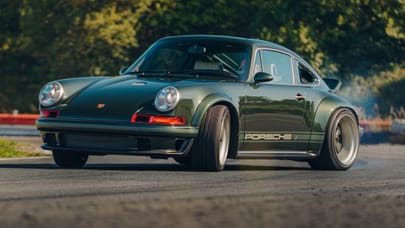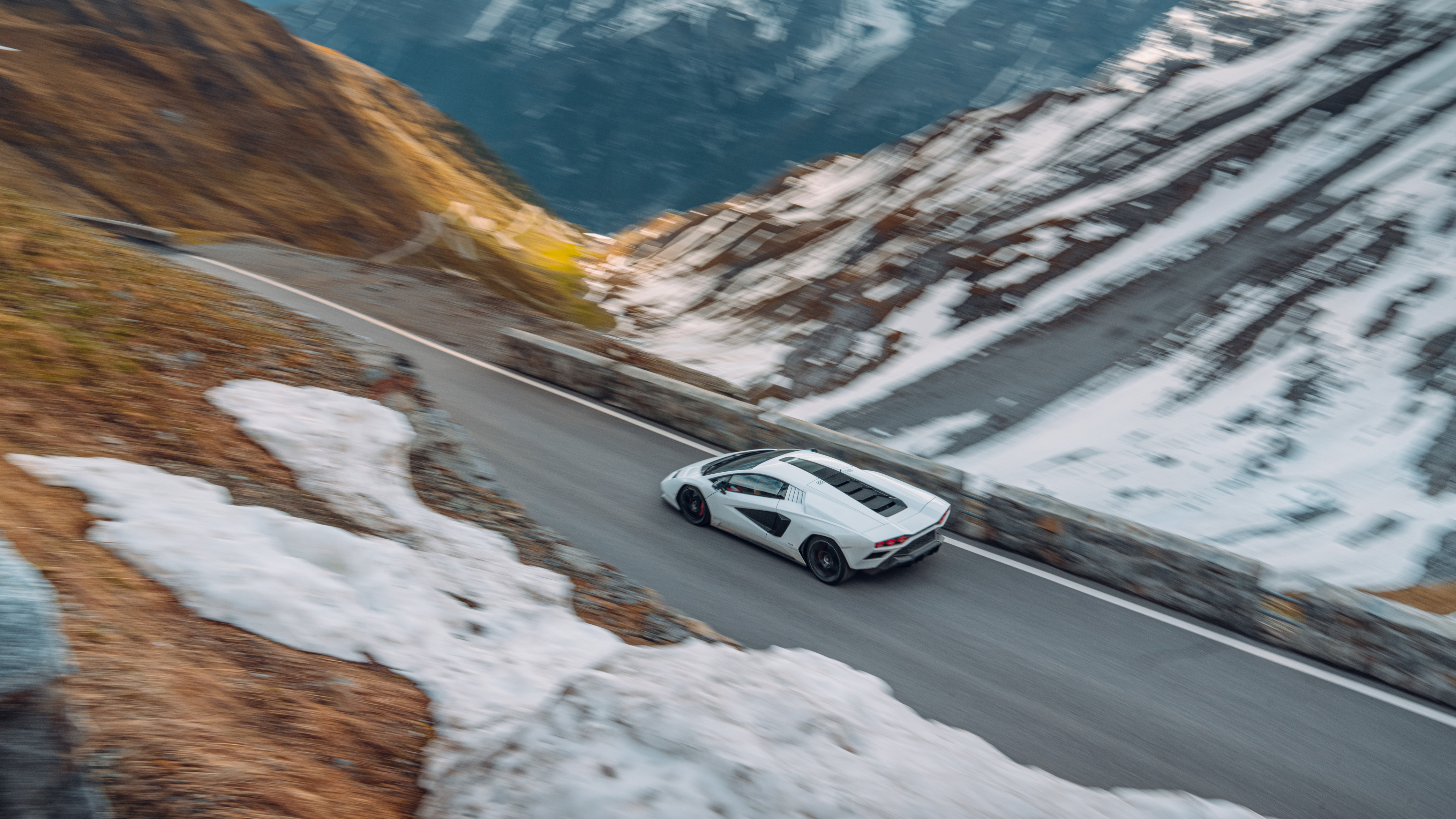
Lamborghini Countach review
Good stuff
Almighty V12, blood and thunder driving experience, the most famous name in supercar-dom
Bad stuff
Confused, half-cocked styling. After that, nothing much matters
Overview
What is it?
Now come on, you know this one. Wedgy Seventies supercar, seminal moment in car design, defined the era, helped set the mid-engined supercar template that has held true to this day, some 50 years later. The one, the only, Lamborghini Countach.
Mark II. So let’s start with the main issue here. Lamborghini claims this is what the Countach would look like if it had evolved. But the original was about revolution, not evolution – if there had been more Countachs each should have been a radical new beginning. It should not be a rebodied Sian, which in turn is a made-over Aventador. On that, Lamborghini and TopGear will have to agree to disagree.
Here's what I want to know first – how do you pronounce it?
Koon-tatch. That second syllable needs to be hard, apparently. The most accurate translation is ‘it’s a miracle!’
But this one’s hardly a miracle is it?
There’s less romance and more hard-nosed business decision about this one, that’s for sure. But you can see the reason for doing it – take 112 old Aventador chassis and turn them into £224 million quid? Stroke of genius. Funds enough to develop new cars and no long term damage done to the image of the original Countach, because people will see straight through this one for what it is and realise the place the original holds.
This is retro done… peculiarly. Most firms have either been entirely faithful to the original (all those lost VIN number cars) or exaggerated/perfected the old timer (Singer 911, Alfaholics GTA-R, GTO Engineering 250 SWB).
Fewer have taken a new car and given it old kit to wear. Ferrari has recently given us the Daytona SP3 which is sort of in that vein, so too the Porsche 935. Neither, arguably, is as successful as Aston’s mighty Victor – not a strict recreation, but brilliant at evoking a sense of time, place and British brutishness.
The trouble for Lambo is that too much of the Sian is still visible, which alludes to the fact this has been done on a relatively tight budget, retaining the hard points, underpinnings and much of the interior.
So what is going on here?
The Sian was the first production Lamborghini ever to feature electrification. It was based on the Aventador, but added a 33bhp electric motor to the 6.5-litre 770bhp V12. That drew charge not from a battery pack, but a light, power dense supercapacitor. The electric motor couldn’t drive the car, but was there to help torque fill during gearchanges. Important work, seeing as the Aventador’s ISR sequential manual gearbox has never been the smoothest, fastest shifter around.
Lamborghini made 63 Sian coupes and 19 roadsters, each costing £2.5 million plus tax. And now it’s built 112 more, each costing £2 million (again plus tax) but wearing a different body.
Underneath the Countach is largely identical to the Sian. Yes, there’s new stitching patterns inside, a Stile mode in the central screen which shows you around the car, different badges and a few other little trinkets, but mechanically this is the same car: a carbon-tubbed, loud-piped 4WD extrovert capable of 0-62mph in 2.8secs, 124mph in 8.6secs and 221mph flat out. At the other end of the scale, 14.5mpg and 440g/km of CO2. So no, that electric motor doesn’t contribute much.
What do we think of the way it looks?
Make your own mind up about that. Obviously the designer of the original, Marcello Gandini, has said he’s not in favour, and for our money it should have been even bolder and more extravagant, with sharper creases and flatter surfacing – almost a caricature of the original. We’d have shoved the LP5000’s wing on as well.
But from a low front three-quarter angle it’s suitably striking and faithful to the original. Maybe don’t venture too far round the back, where the Sian cues are rather obvious.
Guessing it drives rather like the Sian, too?
It does. The driving experience is one area where the Countach is – at least by modern standards – pretty faithful to the original. The big capacity, free-breathing V12 dominates every conversation you have with the car. It’s a magnificent motor, tractable enough low down, but always giving you reason to hold that gear and take it further. Power and revs overrule torque.
The standard carbon ceramic brakes are firm and responsive, the steering is nuanced and feelsome, but the chassis is a bit blunt. Where most modern supercars and hypercars move with relative grace and flow, this stomps.
Where did you drive it?
Thought you’d never ask. We took it to the world’s most famous mountain pass, the Stelvio Pass in northern Italy, before it was opened for the season. So we had it to ourselves. Yep, really. Full story on that in this month’s mag (Issue 362) and film to come on YouTube.
Were they a match made in heaven?
Look out for the other stories, but for now suffice it to say each had a lot in common with the other. As a viewing platform, the Countach takes some beating, especially with a blood red cabin and windscreen that’s so angled back it’s more a skylight. Does tend to lend the outside world a certain drama. And that’s before you factor in the noise, the driving position, the clunky gearbox and so on. Let’s just say driving the Countach is an event, one best experienced on a suitable stage.
What's the verdict?
You choose which side of the Countach fence you sit: either you love it for bringing back a notorious badge and powering it with a V12 that’s now twice as potent as the one it was fitted with 50 years ago, or you disdain it for not going further, for not being as radical and revolutionary as the original, for being a Countach in name and clothes only.
We can’t help feeling that a car as important to the history of the supercar, as instrumental in its development, deserved a more fitting tribute. It’s not the idea of a reimagined Countach we’re taking issue with, but the execution of it. That said, lit up in third gear, V12 snarling in your ears, maybe it’s closer to the drama of the Countach than we give it credit for.
The Rivals
Trending this week
- Car Review
Hyundai Kona
- Long Term Review
Time's up with the Mini Countryman: here's the six-month verdict
- Top Gear's Top 9
Nine dreadful bits of 'homeware' made by carmakers









